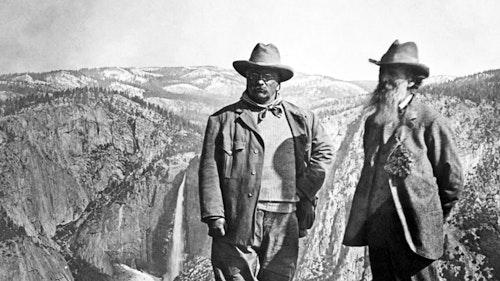At first blush, the concept of hunting whitetails — or any other game animal, for that matter — behind a fence makes little sense to most American sportsmen. On the surface, it violates the concept of fair chase hunting, where there is no guaranteed outcome. As the saying goes, you pay your money, you take your chances and success is never ensured.
This has been the bedrock of sport hunting in America since the late 1800s, when unregulated sport and commercial market hunting had taken its toll on America’s wildlife and game was no longer plentiful. Then in 1887, ardent outdoorsman Theodore Roosevelt and a group of his friends formed the Boone and Crockett Club to address this rapid decline. At its core, their organization advocated a foundational, new way to use natural resources called “conservation.” Regulated hunting was the bedrock of this new system. A big part of this would be a then-radical new concept known as fair chase.
Today the Pope & Young Club and Boone & Crockett Club have fair chase hunting statements on their websites; both are worth checking out. Neither group will accept animals taken inside a high fence into their record books, which makes a ton of sense to me.

Globally, the whole topic of hunting inside a high fence is a bit complicated. In much of the world, it’s an accepted practice. For example, the majority of hunting in South Africa occurs inside a high fence, though sometimes the land mass is so large the fences really don’t play a part in success or failure. In this situation, the fencing is in place primarily to keep poachers and predators out. I bowhunted plains game one week in South Africa on a fenced ranch that encompassed almost 30,000 acres — that’s nearly 47 square miles — much of it rugged, mountainous terrain where hunting was difficult, to say the least. I didn’t find getting a shot at an animal like shooting a duck in a barrel.
In the U.S., high-fence hunting occurs to a smaller degree. In Texas, for example, there are lots of high-fence ranches offering whitetails and exotic animals imported from around the world. Some other states have high-fence ranches specializing in monster whitetail bucks, with pricing determined by the size of the antlers. You can also find ranches that offer big bull elk, bighorn sheep and other animals. It’s a highly controversial industry.
Captive Deer Hunting and Chronic Wasting Disease
However captive deer hunting receives the most scrutiny in America today, and it hasn’t been the concept of fair-chase hunting that's put the industry under the microscope. Instead, it's the spread of Chronic Wasting Disease (CWD).
As Whitetail Journal readers know, CWD is a brain disease that affects deer, elk and moose. CWD is an invariably fatal transmissible spongiform encephalopathy with a near-100 percent fatality rate, and it’s been expanding across the whitetail’s range. Game managers have been working to prevent its spread in various ways, including prohibiting interstate transport of game killed in locations where CWD-infected animals are known to live, mandatory inspection of the brain matter of game killed in these areas and regulating the movement and holding of captive deer. This includes stricter regulations on fencing to help ensure that captive deer do not escape into the wild and potentially infect wild-deer populations. Often areas where captive deer are fenced have been the same areas where CWD is first introduced into states or, in other cases, where CWD had only been found in small, isolated pockets.
To Each His Own, But ...
One thing I’ve never understood is the fascination “hunters” have with going behind a relatively small high-fenced farm or ranch to shoot a deer or other animal that has been bred exclusively for mega-large antlers or horns, and where the outcome is never in doubt. Don’t get me wrong, if people want to conduct this as their business and others want to pay to shoot the animal, that’s OK with me. As long as the animals do not suffer and the meat is not wasted, how is it any different, really, than what occurs on a grand scale in the domestic livestock industry? But please, don’t call it hunting, because it is not. It’s simply collecting.
Once in Colorado, I was invited to go inside a 5,000-acre high fence and shoot a giant bull elk. I politely declined, but I said I’d love to ride through the ranch and see the elk. Holy smokes, there were some dandies! But the 280-inch 6x6 bull I stalked and arrowed about five miles outside the fence meant a whole lot more to me than had I shot a 400-incher inside the wire.
Today hunting is under attack on multiple fronts by large anti-hunting organizations with deep pockets and highly motivated members. They don’t let the facts get in the way of the falsehoods they spread to the majority of Americans who not on only don’t hunt, but increasingly know little about how Mother Nature really works.
That’s why sportsmen, more today than ever before, need to promote and follow the tenets of fair-chase hunting. Let’s call the killing of captive-bred deer and other big game what it is — collecting — and let others know that is has absolutely nothing to do with fair-chase hunting. At all.
What’s your take on fair-chase hunting, and hunting inside a high fence? Drop me a note at editor@grandviewoutdoors.com and let me know.






